Picture this: a seamless dance of coordination, where the right agent is always at the right place, at the right time, armed with the right knowledge to delight customers. It's not just about filling time slots; it's about orchestrating a symphony of efficiency and satisfaction.
Why does agent scheduling matter? Because time is money. Every idle moment is a missed opportunity, and every mismatched assignment is a potential customer lost. For instance, Chime, a once-renowned fintech company, faced $2.5 million in fines in 2021 due to untimely and poor resolution of customer complaints.
But enough about the whys; let's dive into the benefits. Imagine a world where every customer feels like they're your top priority. That's the power of effective agent scheduling. It's about reducing wait times, resolving issues faster, and delivering personalized experiences that keep customers coming back for more. It's about turning transactions into transformations and interactions into memories.
Ensuring full customer service coverage is a multi-step process. It may involve hiring more agents, providing additional training, implementing automation tools, or some combination of these approaches. But you can start with your existing resources. For instance, reviewing your agent scheduling strategy can be a good starting point.
TL;DR
- Agent scheduling is a critical component of customer service operations, ensuring that the right agents are available at the right times to handle customer inquiries and support requests. It plays a crucial role in enhancing customer satisfaction, maximizing operational efficiency, and fostering a positive work environment for employees.
- Effective agent scheduling is essential for optimizing resources and preventing revenue loss. For instance, inefficient scheduling can lead to missed opportunities, customer dissatisfaction, and even fines for regulatory non-compliance.
- Benefits of Effective Scheduling:
- Improved employee experience and reduced attrition: By preventing burnout and ensuring fair workload distribution, effective scheduling boosts employee morale and reduces turnover rates.
- Increased operational efficiency: Proper scheduling leads to better utilization of resources, resulting in enhanced productivity and reduced operational costs.
- Elevated customer experience: Well-planned schedules help in reducing wait times, resolving issues faster, and delivering personalized experiences, thus fostering customer loyalty and satisfaction.
- Scalability and long-term planning: Strategic scheduling allows businesses to anticipate future growth and adjust staffing levels accordingly, ensuring sustainable scalability.
- Optimized resource usage: Efficient scheduling ensures that staffing levels align with fluctuating demand patterns, minimizing idle time and controlling labor costs.
- Enhanced operational flexibility: Effective scheduling practices enable businesses to adapt quickly to unforeseen events, such as spikes in customer inquiries or unexpected agent absences.
- Data-driven insights and continuous improvement: Analyzing scheduling data and performance metrics helps in identifying trends, patterns, and areas for improvement, leading to continual enhancement of customer service delivery and organizational performance.
- Balanced Scheduling Components:
- Staff forecasting involves analyzing historical data and trends to anticipate the volume of customer inquiries or support requests expected at different times.
- Shift planning involves assigning the right number of agents based on staffing requirements, considering individual skills, preferences, and work-life balance needs.
- Real-time team monitoring: Continuously monitoring staff utilization rates, call volumes, and other key metrics to identify potential issues and make timely adjustments to schedules.
- Best Practices for Agent Scheduling:
- Prioritize open dialogue with agents: Involve agents in the scheduling process to understand their needs, preferences, and constraints.
- Consider agents' skills for better engagement: Assign roles that align with agents' skills and preferences to enhance engagement and performance.
- Incorporate flexibility: Leave room for unforeseen events by maintaining flexible schedules and having contingency plans in place.
- Monitor performance and agent well-being: Continuously monitor agent performance and well-being to prevent burnout and ensure optimal productivity.
- Factor in customer feedback: Regularly gather and analyze customer feedback to adjust scheduling strategies and improve service delivery.
- Use Help Desk Software: Invest in help desk software with scheduling capabilities or integrate with standalone workforce management tools for efficient scheduling and performance tracking.
- The list of top help desks with scheduling capabilities includes Zendesk, Freshdesk, Salesforce Service Cloud, ServiceNow, Jira Service Management, HappyFox, Deskpro, Zoho Desk, LiveAgent, and Spiceworks.
- By implementing effective agent scheduling practices, businesses can optimize their customer support operations, deliver exceptional service, and achieve sustainable growth.
By implementing effective agent scheduling practices, businesses can optimize their customer support operations, deliver exceptional service, and achieve sustainable growth.
What is agent scheduling?
Agent scheduling is the complex process of assigning specific shifts to each customer support agent. It’s all about balancing the right number of the right agents working at the right time.
Consider for a moment the intricacies involved. A customer support manager must juggle peak hours, staffing levels, and the unique skill sets of each agent. Factor in employee breaks, vacation requests, and the unpredictable ebb and flow of customer demand, and you're faced with a veritable puzzle to solve. Moreover, the unforeseen curveballs of agent absences due to illness or other unexpected circumstances add another layer of complexity to the mix. And let's not forget the imperative to keep a tight rein on labor costs.
Indeed, mastering the art of efficient agent scheduling is no mean feat. However, those who navigate these challenges with finesse will find themselves propelling their business to soaring heights of success. After all, in customer support, impeccable scheduling isn't just a necessity—it's the cornerstone of delivering unparalleled service and fostering lasting customer satisfaction.
7 Benefits of Effective Agent Scheduling
Adequate workforce planning helps to improve a business's bottom line through the following benefits. Let's dissect how this practice can elevate organizational performance across various dimensions:
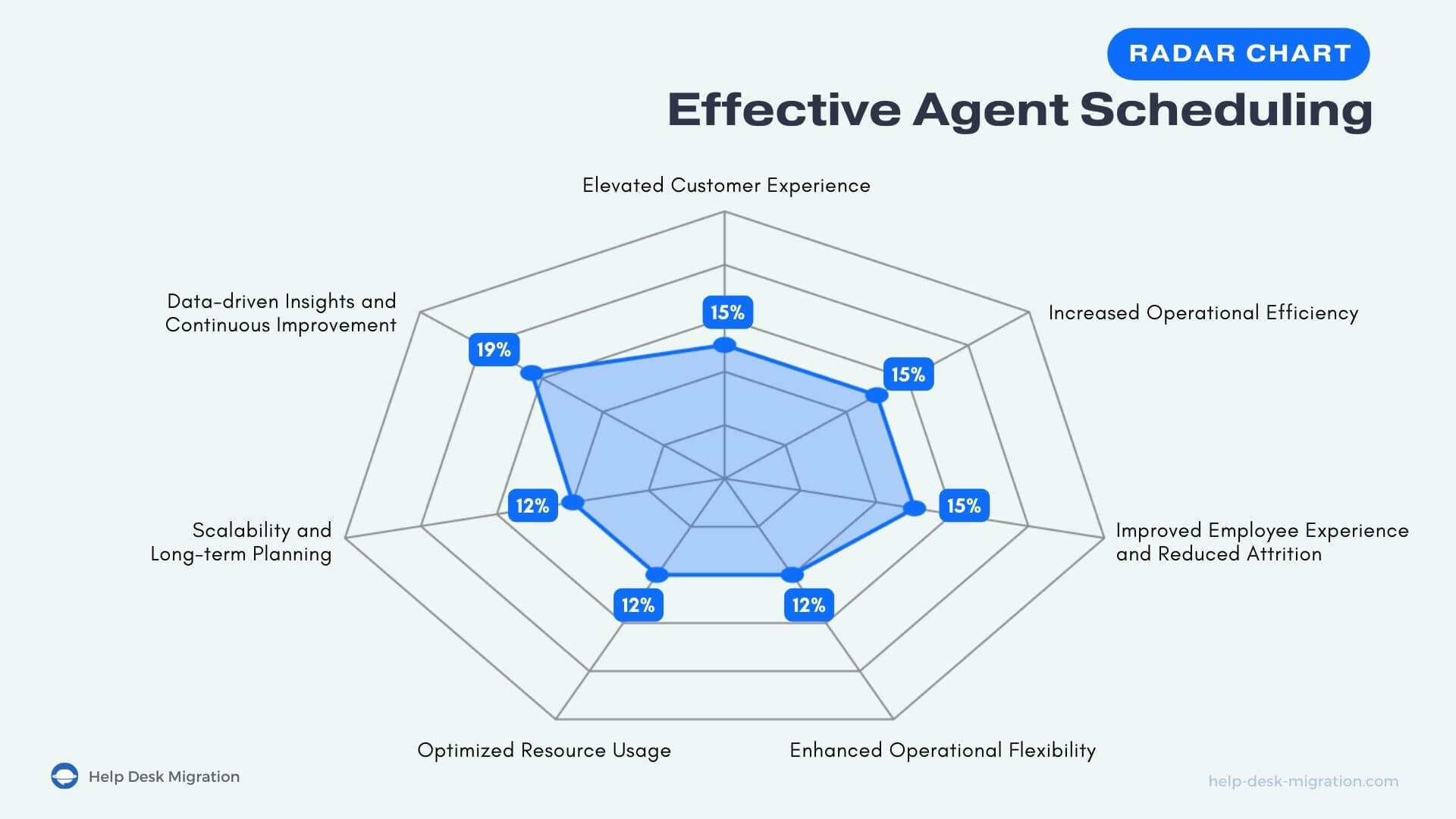
1 Improved employee experience and reduced attrition
Effective scheduling reduces agent attrition.
The research underscores that a staggering 79% of employees weigh their schedules heavily in their decision to stay with an employer. Fair workload distribution prevents burnout, thus curbing high attrition rates. By fostering a supportive environment through effective scheduling, businesses cultivate a loyal and engaged workforce, leading to enhanced productivity and retention rates.
2 Increased operational efficiency
Happy support agents are productive employees. The ripple effects of responsible staff scheduling reverberate throughout operations. The Gap's retail experiment showcases a tangible example, with a 5.1% surge in staff productivity and a 3.3% upswing in sales following the adoption of such practices.
With agent scheduling that considers all the variables, the ideal number of agents with the required skills will be available to assist customers without overstaffing or understaffing.
3 Elevated customer experience
Customers don’t forgive poor service. Negative experiences prompt 60% of customers to abandon a brand after just one or two poor interactions. Enter effective agent scheduling: a powerful tool for reducing wait times and enhancing resolution rates. By prioritizing customer satisfaction, businesses foster brand loyalty, amplify word-of-mouth referrals, and fortify their competitive edge.
4 Scalability and long-term planning
Successful businesses grow, but there’s no sense in a huge customer base if you can’t cater to it properly.
A forward-looking approach to scheduling transcends immediate needs, empowering businesses to navigate future growth seamlessly. Accurate demand forecasting enables proactive adjustments to staffing levels, ensuring that resources align with evolving business requirements. Whether planning for next week or next year, strategic scheduling is the linchpin of sustained scalability and success.
5 Optimized resource usage
Efficient agent scheduling ensures that staffing levels are aligned with fluctuating demand patterns, preventing overstaffing or understaffing scenarios. By optimizing resource allocation, businesses can minimize idle time, maximize productivity, and control labor costs. Moreover, agile scheduling practices equip businesses to navigate unforeseen disruptions with ease, ensuring uninterrupted service delivery and operational resilience.
6 Enhanced operational flexibility
Effective scheduling practices enable businesses to adapt quickly to unforeseen events, such as sudden spikes in customer inquiries or unexpected agent absences. By having contingency plans in place and leveraging scheduling tools and technologies, businesses can maintain service levels, mitigate disruptions, and ensure continuity of operations, even in challenging circumstances.
7 Data-driven insights and continuous improvement
By analyzing scheduling data and performance metrics, businesses can identify trends, patterns, and areas for improvement. This data-driven approach allows for ongoing optimization of scheduling processes, adjustment of staffing levels, and refinement of training programs, leading to continual enhancement of customer service delivery and organizational performance over time.
Good scheduling balances the needs of businesses, customers, and employees, leading to efficiency and reduced costs. Achieving this balance involves three components.
3 Steps of Balanced Agent Scheduling
Efficient contact center scheduling involves three steps:

Step 1: Staff forecasting
The foundation of effective agent scheduling lies in accurate staff forecasting. This entails analyzing historical data and trends to anticipate the volume of customer inquiries or support requests expected at different times. By leveraging data-driven insights, managers can make informed decisions about staffing levels, ensuring adequate coverage to meet demand without overstaffing.
Step 2: Shift planning
Knowing the number of agents is only half the battle. Once staffing requirements are determined, the focus shifts to shift planning. This involves not only assigning the right number of agents but also considering their individual skills and work-life balance needs. Managers must factor in breaks, mealtimes, vacations, sick leave, and other personal preferences to optimize efficiency and mitigate the risk of employee burnout. By prioritizing the well-being of agents while aligning schedules with business needs, organizations can cultivate a healthier and more productive workforce.
Step 3: Real-time team monitoring
Despite meticulous planning, unforeseen events can disrupt even the most comprehensive schedules. Real-time team monitoring is essential for responding swiftly to unexpected changes in customer demand, technical failures, or other emergencies. By continuously monitoring staff utilization rates, call volumes, and other key metrics, managers can identify potential issues and make timely adjustments to schedules on the fly. This agility minimizes disruptions and ensures that customer service levels remain consistently high, even in dynamic environments.
While these three components are the most essential for agent scheduling, there is much more in the details. Let’s explore the main agent scheduling best practices.
6 Best Practices for Agent Scheduling
Implementing effective agent scheduling practices is crucial for optimizing operational efficiency, enhancing employee engagement, and delivering exceptional customer service. Here are six best practices to guide your approach:
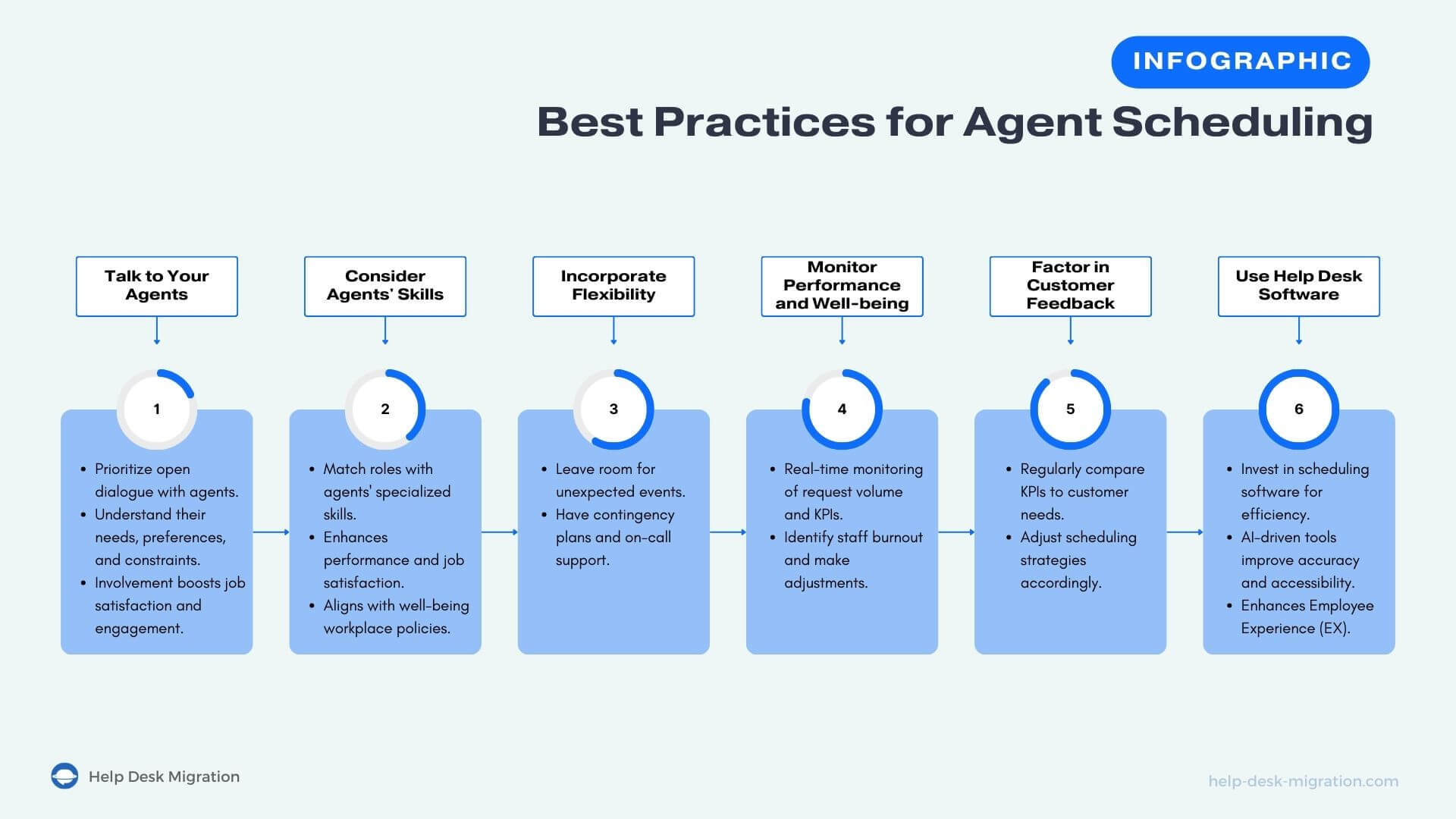
1 Talk to your agents
Prioritize open dialogue with your agents before finalizing schedules. Take the time to understand their needs, preferences, and constraints. According to a Shiftboard survey, 80% of employees value the ability to influence their schedules. By involving agents in the scheduling process, you can boost job satisfaction, engagement, and retention rates.
2 Consider agents’ skills for better agent engagement
Aside from accounting for demand and agent preferences, bring agents’ skills into the equation. After all, your agents will be more engaged and perform better in roles that suit them and best utilize their specialized skills, compared to roles that don’t. In addition to enhanced performance, meaningful work increases job satisfaction.
And a bonus: the American Heart Association cites alignment between skills and job tasks as one of nine workplace policies that promote well-being and reduce burnout.
3 Incorporate flexibility
Again, you can’t foresee everything. An employee may call in sick or there may be an expected spike in customer inquiries due to a system failure, a natural disaster, or a cyberattack.
To spare your customers from waiting ages for your company to respond, don’t make schedules too tight — always leave room for maneuvering. Contingency plans to cover the most likely scenarios and a pool of on-call employees are a must.
4 Monitor performance and agent well-being
This tip complements the previous one. Real-time monitoring of request volume and system health can help you minimize the effect of force majeure situations, like those described above.
In addition, it’s vital to monitor agent KPIs, like first response time, average handle time, first contact resolutions, and more. A decrease in agent performance for no obvious reason can indicate staff burnout. So, in addition to ensuring that an optimized schedule ticks all the boxes, monitoring performance lets you foresee employee fatigue and make timely adjustments.
5 Factor in customer feedback
Your assumptions about good service might differ from what your customers expect. Calabrio revealed a stark contrast: although 79% of customer support managers believed their teams' response time met customer expectations, only 45% of customers shared this sentiment.
To avoid this disconnect, compare your KPIs to customer needs and adjust your agent scheduling strategies accordingly. Given that customer expectations change over time, do this regularly.
6 Use help desk software
Building an efficient schedule and tracking crucial metrics in real time is impossible with spreadsheets alone. No wonder 25% of executives in Quinyx’s survey were in desperate need of powerful scheduling software.
A robust workforce management solution collects critical customer demand and team performance data to create accurate schedules for any workload level. Aside from efficiency, automated shift planning solutions, and especially AI-powered tools, boost accuracy: Quinyx also reported that older scheduling options delivered only 70% accuracy, while AI-driven scheduling software is practically flawless.
What’s more, 81% of employees expect to access their schedules from anywhere. Automated employee scheduling solutions let employees review their schedules, make changes, and communicate their availability to managers. Such capabilities can significantly enhance EX.
But you can’t achieve sublime accuracy and efficiency with subpar tech.
10 Top help desks and their agent scheduling capabilities
When it comes to optimizing agent scheduling, you essentially have two options: deploying a standalone workforce management solution or choosing help desk software with shift planning functionality.
While the second option seems to kill two birds with one stone, agent scheduling capabilities vary from one help desk solution to another. Even some of the top customer support management tools fall short in terms of scheduling features.
To simplify your search for the right customer service platform, we’ve rounded up the most popular support service tools and their key workforce management capabilities.
Zendesk
Zendesk’s scheduling feature uses AI to plan shifts based on the forecasted workload, required customer coverage, and location requirements. Complete with breaks and channel-specific needs, Zendesk’s schedules can be generated for a single agent or a group of agents, based on team location specifics.
In addition, managers using Zendesk can view agent availability and track time-off requests.
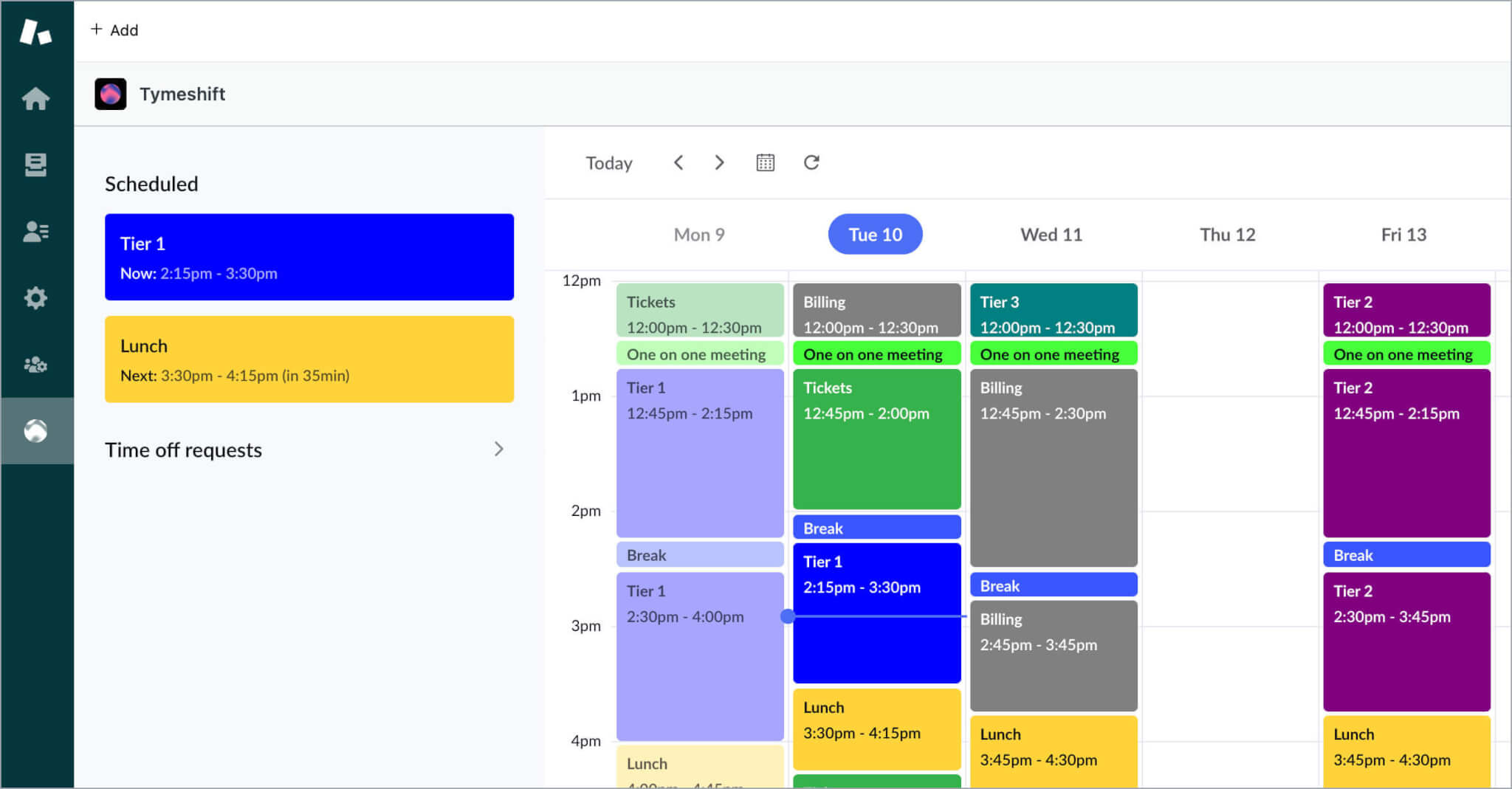
Source: Zendesk
Freshdesk
Freshdesk allows customer support teams to set up and keep track of different agent shifts, schedule time off, and manage shift swaps, making sure inquiries are assigned only to available agents.
In addition, the help desk solution lets you track your team’s availability and make staffing decisions based on forecasted ticket volume and agents’ performance.
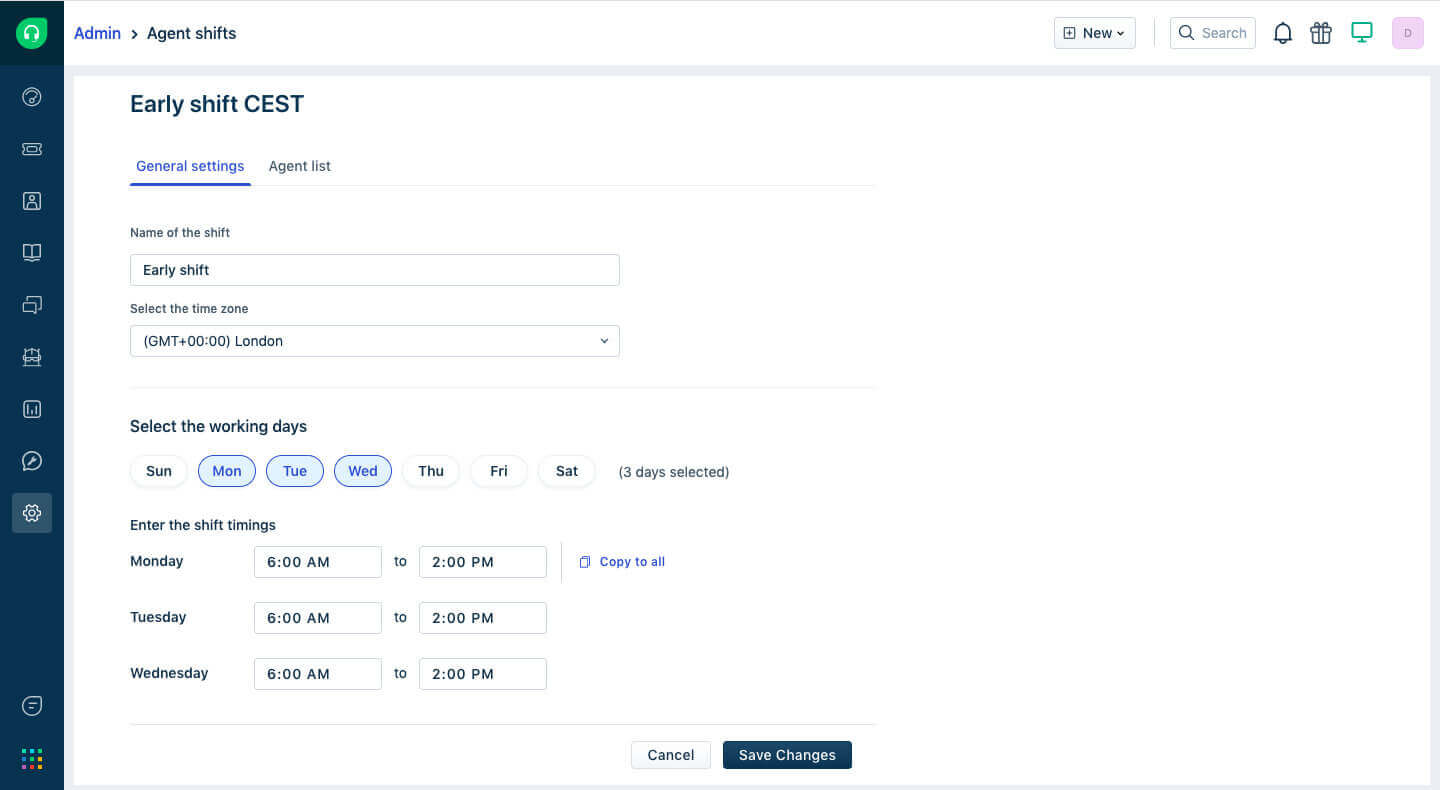
Source: Freshworks
Salesforce Service Cloud
Among Salesforce Service Cloud’s workforce management tool, its Shifts feature lets organizations create different shift patterns based on customer demand. Common shift types include Regular, Overtime, Break, and On-Call.
Salesforce Service Cloud also provides features for agent performance tracking and offers staff forecasting capabilities.

Source: Salesforce
ServiceNow
ServiceNow's Customer Service Management (CSM) module for workforce management has agent scheduling that lets you create and manage schedules based on SLA agreements and time zone differences. You can add breaks, time off, meetings, and other events, and forecast demand to plan agent coverage accordingly. Service managers can also monitor schedule adherence in real time.
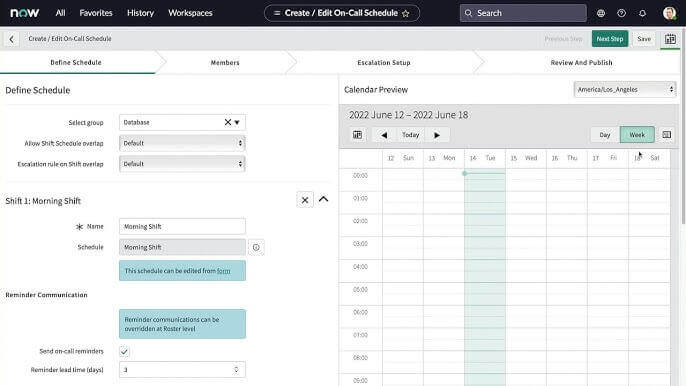
Source: ServiceNow
Jira Service Management
Jira Service Management doesn’t have dedicated agent scheduling or shift management features. However, you can use it in conjunction with other Atlassian tools, like Jira Work Management, to address scheduling needs.
This service desk platform lets you track time spent on tickets, the time logged by each agent, and the time remaining to resolve the ticket. It also monitors agent performance to help optimize resource allocation.
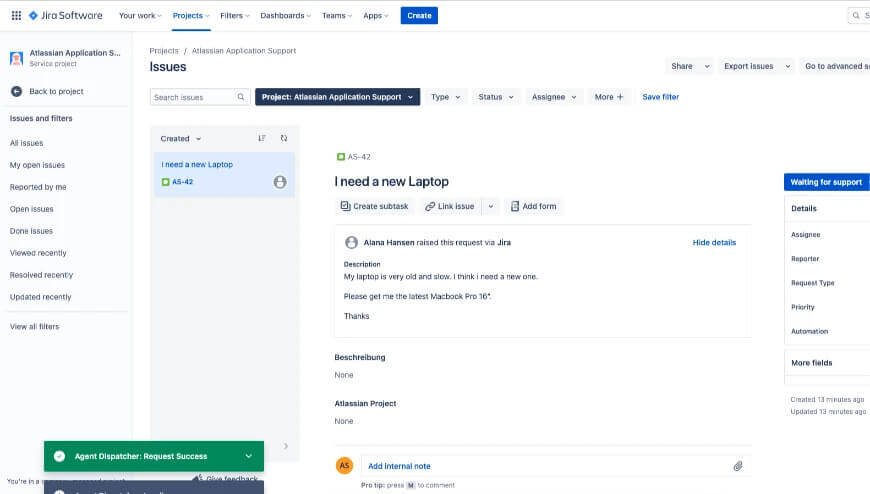
Source: Atlassian
HappyFox
HappyFox comes with a comprehensive suite of workforce management features, including agent scheduling, shift planning, and time tracking.
It allows businesses to create and manage agent shifts in real time, track agent availability (including vacation days, holidays, and other time-off requests), and generate reports on agent utilization, shift adherence, and performance trends.
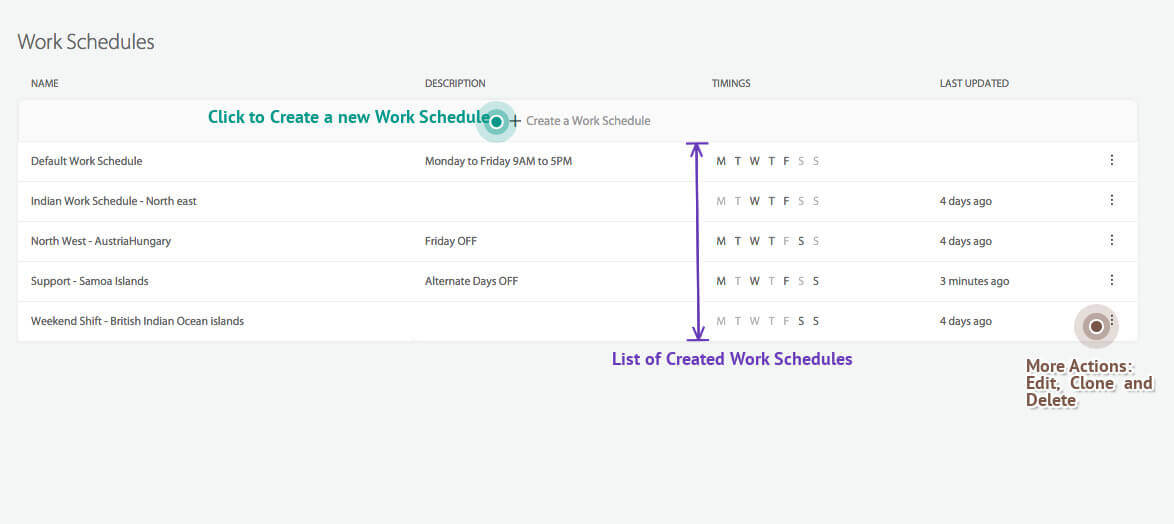
Source: HappyFox
Deskpro
Though Deskpro doesn’t offer built-in agent scheduling features, it integrates with workforce planning tools like Schedule It and Papershift. But the help desk solution isn’t completely devoid of workforce management capabilities. For example, a recently added feature called Shifts lets users manage agents’ work statuses and set ticket routing rules based on agent availability.
Deskpro also includes reporting and analytics features to help improve scheduling efficiency.
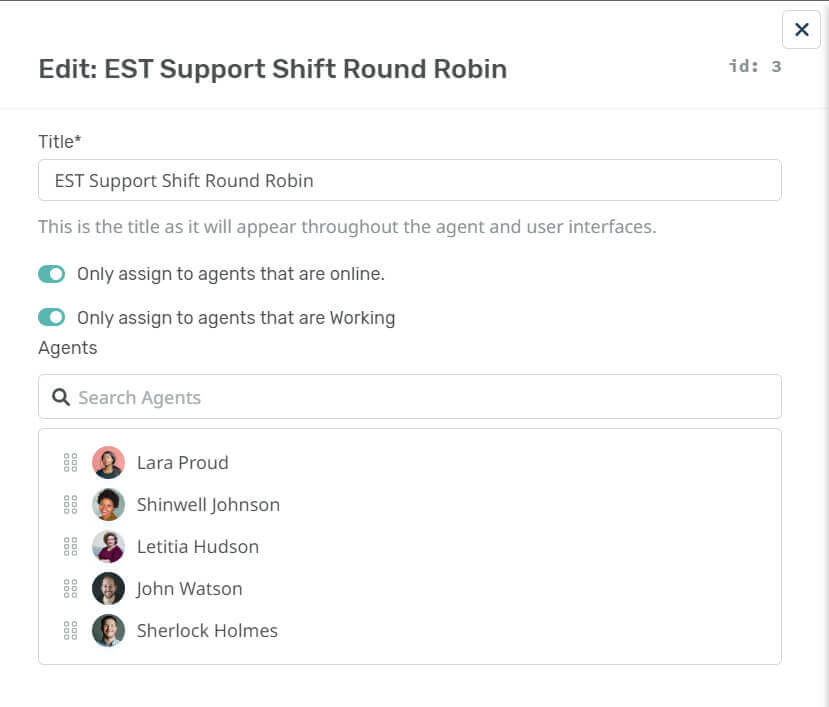
Source: Deskpro
Zoho Desk
Zoho Corporation has a few shift management solutions in its suite that integrate with Zoho Desk. For example, Zoho Shifts allows users to assign shifts to agents based on their availability and skills and communicate updates to the team.
The customer service software also lets agents clock in and out of shifts, request time off, and view their schedules from any device.
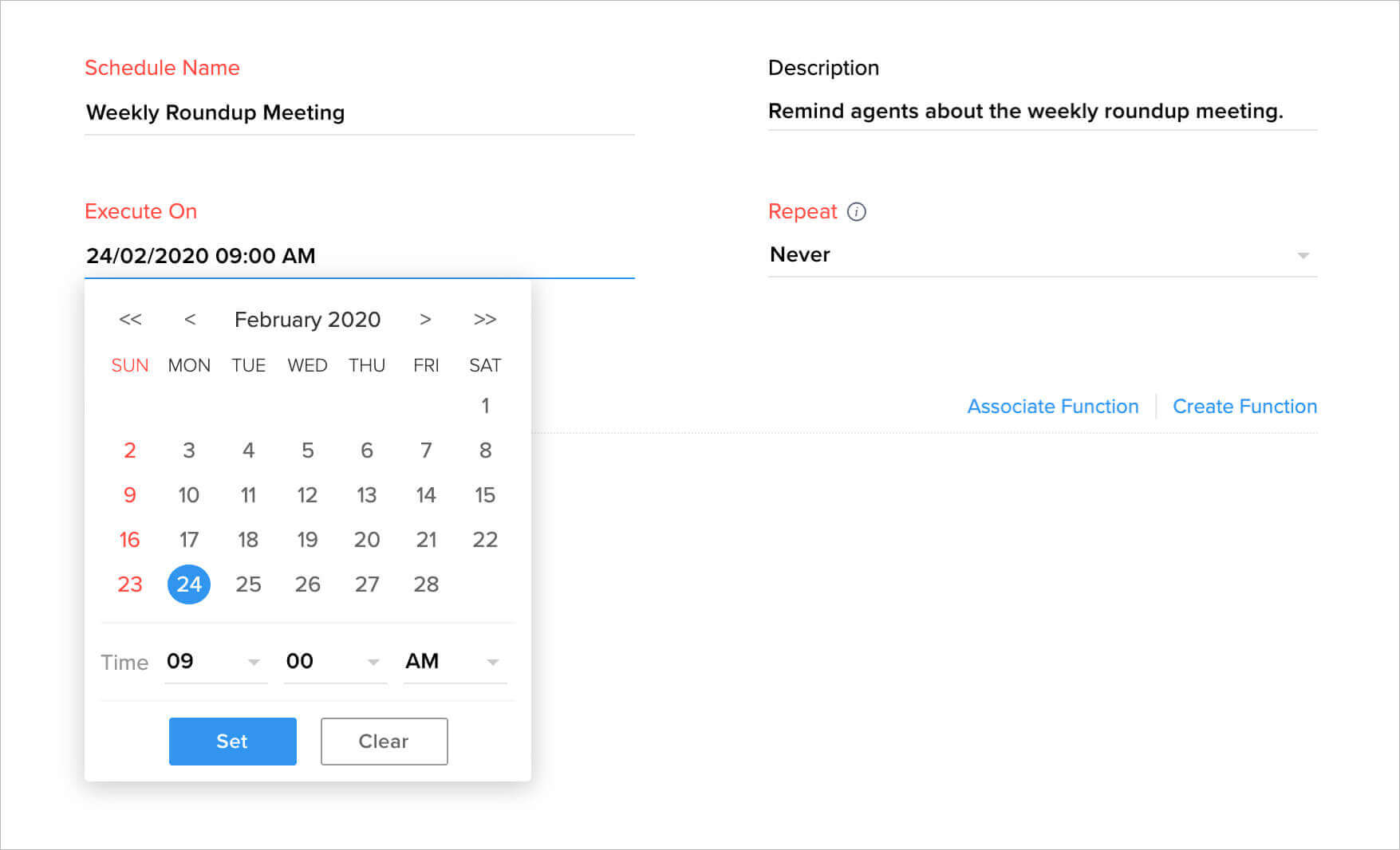
Source: Zoho Desk
LiveAgent
While LiveAgent doesn’t feature dedicated agent scheduling functionality, it offers integrations with third-party workforce planning solutions. This customer service tool has a feature that automatically turns call availability on and off for particular devices according to selected times and dates.
In addition, the line manager can monitor agent availability and track the performance of each support rep (e.g., work time, the number of tickets, chats, and calls answered), enabling managers to optimize agents’ workloads.
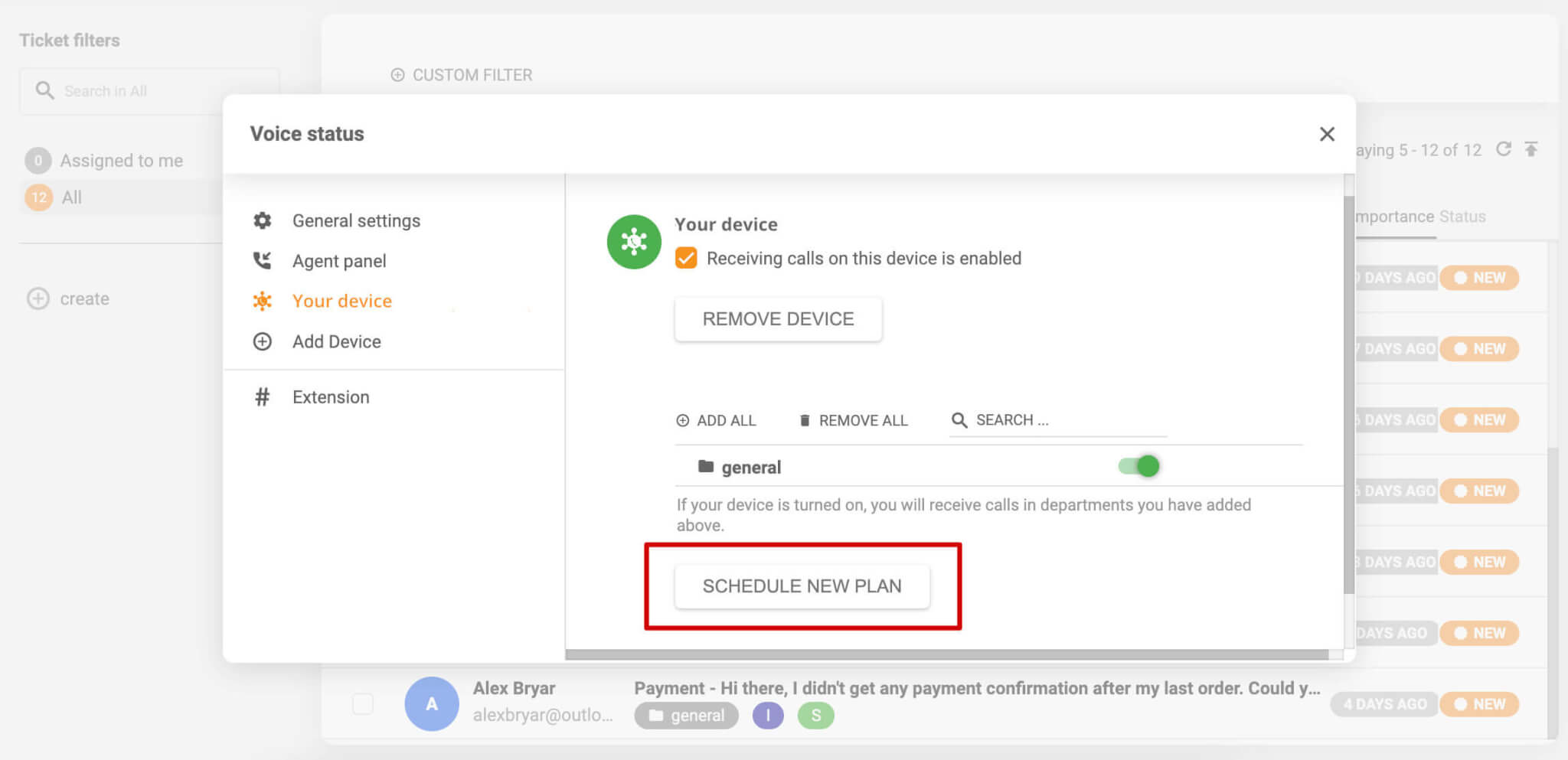
Source: LiveAgent
Spiceworks
Spiceworks is a comprehensive help desk solution that offers basic agent scheduling capabilities. While it may not have advanced features like AI-driven scheduling or real-time monitoring, it helps manage agent shifts, track availability, and coordinate time-off requests within the platform.
Spiceworks provides basic reporting functionalities to monitor agent workload. Additionally, it integrates with other workforce management tools to enhance scheduling capabilities.
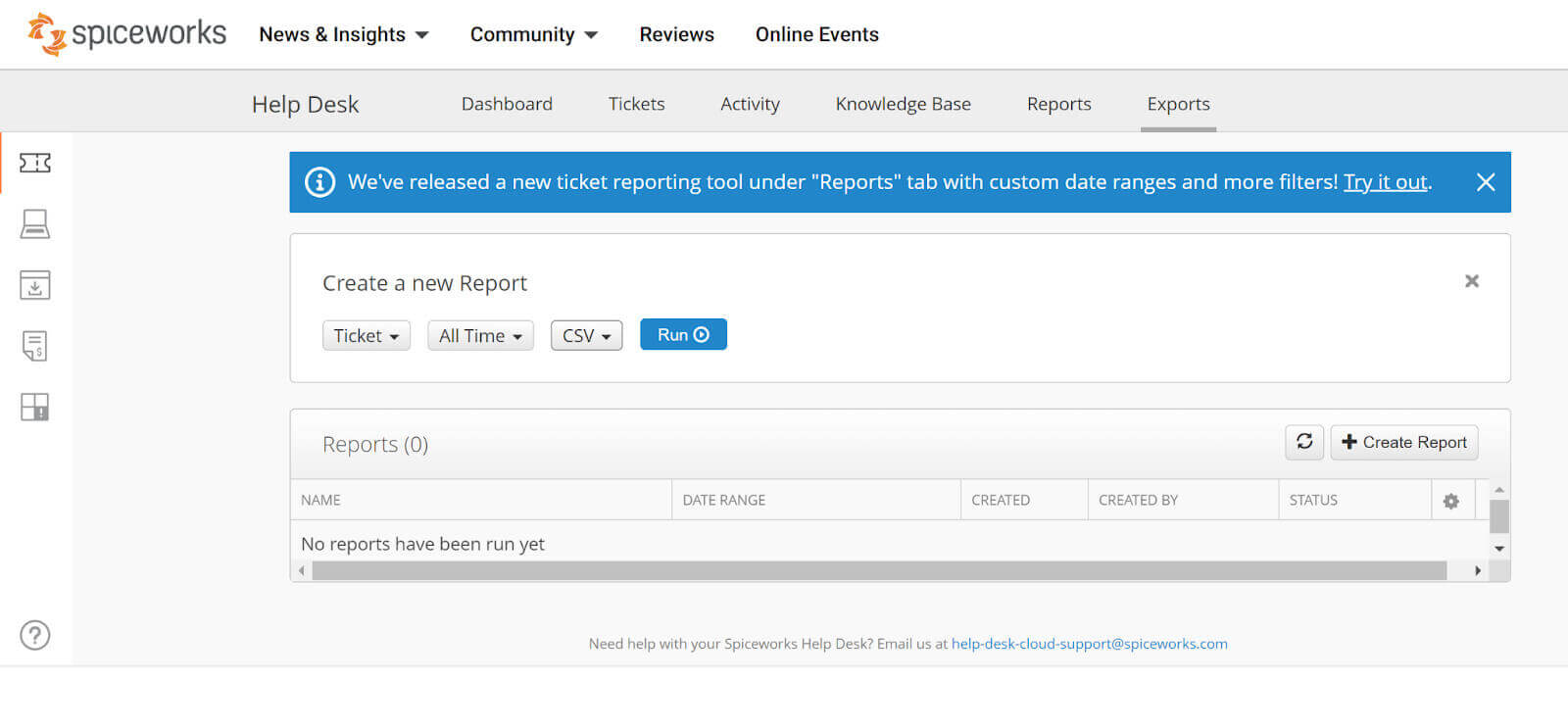
Source: Spiceworks
Do you actually need agent scheduling?
Effective scheduling is the lifeblood of your customer support operations. It affects your bottom line through improved employee experiences, operational efficiency, excellent customer experience, and enhanced scalability potential.
Agent scheduling best practices involve careful consideration of various factors, from expected support request volume to the skills and needs of each agent. Relying on spreadsheets or other legacy staff planning methods is insufficient. Fortunately, many top help desk software tools include shift planning capabilities or have APIs with workforce management solutions.
If your current help desk or service desk lacks agent scheduling features and you prefer not to invest in a standalone workforce management tool, Help Desk Migration can help you migrate customer service data to a new help desk. Be sure to explore its capabilities of our automated data import tool with a free Demo.


